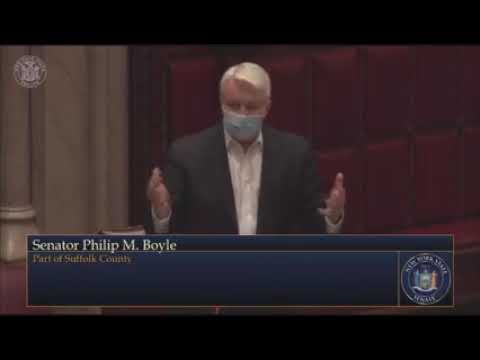
Hurricane Sandy: Emergency Response and Relief Information
Phil Boyle
March 26, 2013
Transitional Sheltering Assistance Program Extended in NY for an Additional 17 Days
The Federal Emergency Management Agency (FEMA), at the request of the State of New York, has approved a 17-day extension to the Transitional Sheltering Assistance (TSA) program, which allows eligible survivors from Superstorm Sandy who cannot return to their homes to stay in participating hotels or motels.
The new checkout date for those in the TSA program is May 1, 2013. FEMA will call applicants eligible for the extension to notify them of the new checkout date.
“Nearly six months after Superstorm Sandy wreaked havoc for residents caught in its destructive path, the Transitional Sheltering Assistance program continues to be a vital resource for New Yorkers who still need housing assistance,” Governor Cuomo said. “This extension will provide them with a temporary place to stay while they continue to get their lives back to normal.”
This is a short-term program that places families in hotels while they work toward a longer-term housing plan.
To be eligible for TSA, survivors must first apply for federal assistance through FEMA by:
· Registering online at www.DisasterAssistance.gov;
· Registering via smartphone or tablet by using the FEMA app or going to m.fema.gov; or
· Registering by calling 800-621-FEMA (3362) (TTY 800-462-7585). For 711 or Video Relay Service (VRS), call 800-621-3362.
NEW SUPERSTORM SANDY ASSISTANCE PROGRAMS
On April 26, 2013, the Governor’s office announced funding for several new Superstorm Sandy recovery programs for homeowners and businesses. You can obtain more information about these programs by clicking the links below:
Recreate NY Smart Home Program
Recreate NY Multi-Family Housing Program
Small Business Storm Recovery Program
Coastal Fishing Industry Program
Seasonal Tourism Industry Program
New York State Sandy Help Teams will be at several locations to offer more information about these programs and help residents file applications. According to the Governor’s Office, dates and locations will be forthcoming in the near future. You can obtain more information about these programs or file applications online by visiting http://www.nysandyhelp.ny.gov.
Fannie Mae and Freddie Mac Unveil New Relief Program that Lowers Mortgage Payments for Sandy Victims
Governor Andrew M. Cuomo today announced that Fannie Mae and Freddie Mac – in response to a request from the Cuomo Administration – are unveiling a new mortgage relief program to protect victims of Superstorm Sandy from large spikes in their mortgage payments.
Sandy victims who received forbearance will be eligible for a special mortgage relief program that allows those homeowners to lower their monthly payments and avoid sudden payment spikes. Fannie and Freddie’s previous guidelines could have resulted in a typical family being forced to make an immediate balloon mortgage payment of more than $6,000 or see a monthly payment spike of more than $500 or 50 percent. By contrast, the typical family participating in this new program would not only avoid a payment spike, but could also see a more than $200 reduction in their monthly mortgage payment from pre-storm levels.
“I applaud Fannie Mae, Freddie Mac, and the Federal Housing Finance Agency for acting swiftly and unveiling this new program to protect Sandy victims from sudden mortgage payment spikes,” said Governor Cuomo. “Delivering this additional relief is vital to helping ensure Sandy victims can continue to rebuild and recover in the wake of this terribly damaging storm.”
Benjamin M. Lawsky, Superintendent of Financial Services, said, “Fannie and Freddie have done the right thing by responding to Governor Cuomo’s request and unveiling this new program to protect Sandy victims. It is critical that Fannie and Freddie now follow through on their commitment by issuing clear instructions to banks and mortgage servicers to quickly implement this new program so that no Sandy victim gets tripped up by red tape and hit with an unexpected payment spike.”
Last month, Superintendent of Financial Services Benjamin M. Lawsky sent letters to the chief executive officers of Fannie Mae and Freddie Mac – as well as their regulator, FHFA – urging them to address restrictive guidelines that could have hit Sandy victims with large mortgage payment spikes.
In response, FHFA, Fannie Mae, and Freddie Mac have communicated to DFS that a special mortgage relief program will be available to Sandy victims with Fannie or Freddie mortgages who were current on their mortgage payments before the storm. Among other provisions, the program will lower the homeowners’ interest rate to as low as 4 percent, extend the term of the mortgage, and also provide additional forbearance to homeowners who are severely underwater on their mortgages (owe more on their loan than the market value of their home). Fannie Mae and Freddie Mac back more than 65 percent of mortgages in New York.
While this new program provides critical relief to Sandy victims, the Cuomo Administration continues to believe that impacted homeowners should also have the additional option of repaying their forbearance relief at the end of the term of their loan. This additional option would help those borrowers who cannot afford a spike in payments, but also do not want to start a new loan term. The Cuomo Administration will continue to work with FHFA, Fannie Mae, and Freddie Mac on this issue so that Sandy victims have that additional support and flexibility as they rebuild and recover from this catastrophic storm.
The Cuomo Administration has worked hard to cut red tape for homeowners impacted by Superstorm Sandy. Last week, at Governor Cuomo’s direction, Superintendent Lawsky sent letters to FICO, TransUnion, Experian, Equifax, and the Consumer Data Industry Association (CDIA) requesting that they promptly move to protect Sandy victims from unfair black marks on their credit scores if they missed payments due to the storm.
A DFS investigation also found that many Superstorm Sandy victims receiving insurance claim checks face a hurdle that they often hadn’t anticipated: the check is issued jointly to the homeowner and that homeowner’s bank or mortgage servicer, thus requiring the bank’s endorsement of the check before the homeowner may access the funds. In December 2012, the Department of Financial Services and major banks reached an agreement that improved the situation by speeding advance checks to homeowners. The Department also sent a letter to banks and mortgage servicers in February 2013 proposing a set of best practices to help get relief to homeowners more quickly.
While most banks and servicers responded to these changes and picked up the pace, DFS conducted a further investigation in March 2013 and identified the ten banks with the worst statistics relating to the payout of insurance claims to Superstorm Sandy victims and urged them to speed the disbursement of those funds to affected homeowners. At that time, Superintendent Lawsky also again urged banks and servicers to implement the best practices DFS put forward in its February 2012 letter.
Those best practices include:
1. Publishing clear, easily accessible information on their websites describing the procedures required to release funds, providing copies of required forms, and listing direct contact information for consumer representatives.
2. Designating a single point of contact for homeowners.
3. Immediately releasing all funds designated by the insurance company as “emergency” or “advance” funds.
4. Permitting submission of required documentation via fax and email. Storm Sandy-related faxes and emails should have a separate, designated fax number and email address to expedite processing.
5. Minimizing the amount of documentation required during each phase of repair.
6. Holding all insurance proceeds in an interest bearing escrow account for the homeowner’s benefit.
7. Processing all mail on the day of receipt.
8. Upon receipt of complete documentation, releasing proceeds the day of receipt.
9. In the event that they receive incomplete documentation, notifying the homeowner immediately with detailed instructions on additional requirements.
10. For those with branches, accepting paperwork and endorse checks at all branch locations.
11. Where proceeds cannot be released in person at a branch location, dispersing funds via electronic transfer or overnight delivery.
12. Requiring inspection only if specifically required by investor guidelines.
13. Where inspection is required, deploying inspectors within two days of becoming aware of the homeowner’s request for such inspection.
14. Conducting all inspections at the servicer’s own expense.
15. Upon receipt of proof that homeowner is seeking only reimbursement for money already expended on home repairs, issuing check or electronic transfer directly and exclusively to the homeowner.
16. Maintaining sufficient staff to comply with all of the above practices.
Residents of thirteen declared counties may apply for FEMA disaster assistance
Governor Andrew M. Cuomo today announced that the deadline for residents living in one of the thirteen disaster-declared counties to register for FEMA assistance has been extended to April 13, 2013. The previous deadline was March 29, 2013.
Federal disaster assistance for individuals and families can include money for rental assistance, essential home repairs, personal property losses and other serious disaster-related needs not covered by insurance. Residents in the following counties are eligible for assistance: Bronx, Kings, Nassau, New York, Richmond, Rockland, Westchester, Suffolk, Queens, Orange, Putnam, Sullivan and Ulster.
“As the six-month anniversary of Superstorm Sandy approaches, many New Yorkers impacted by Hurricane Sandy are still in need and must have access to disaster assistance and resources to help them get back on their feet,” Governor Cuomo said. “This extension from FEMA will provide impacted residents with more time to get help so they can rebuild as soon as possible.”
The state’s request also included a 14-day extension for individuals and businesses to apply to the Small Business Administration for lowered-interest loans.
Individuals can register online at www.disasterassistance.gov [2] or via smartphone or tablet at m.fema.gov.
Applicants may also call 800-621-3362 or (TTY) 800-462-7585. Applicants who use 7-1-1 Relay or Video Relay Services (VRS) may call 800-621-3362. The toll-free telephone numbers operate 7 a.m. to 1 a.m., seven days a week until further notice.
The SBA Disaster Customer Service Center toll-free number is: 800-659-2955 (TTY 800-877-8339). Assistance is also available by sending an email to DisasterCustomerService@sba.gov [3] or by visiting www.sba.gov.
A simple and fast way to complete an SBA application is online is available at: https://DisasterLoan.SBA.gov/ELA.
FEMA and SBA representatives are available to answer questions at each Disaster Recovery Center. To find the nearest disaster recovery center, use the locator at www.FEMA.gov/disaster-recovery-centers [6] or, with a tablet or smartphone, go to m.fema.gov.
You may also text “DRC” and your Zip Code to 43362 (4FEMA). For example, if you lived in Staten Island, you would text: DRC 10301. Or call 800-621-3362 (TTY 800-462-7585).
IMPORTANT LINKS FOR HURRICANE SANDY RELIEF:
Office of Emergency Management Links
Storm Information: Governor's Office
New York State Division of Homeland Security and Emergency Services


